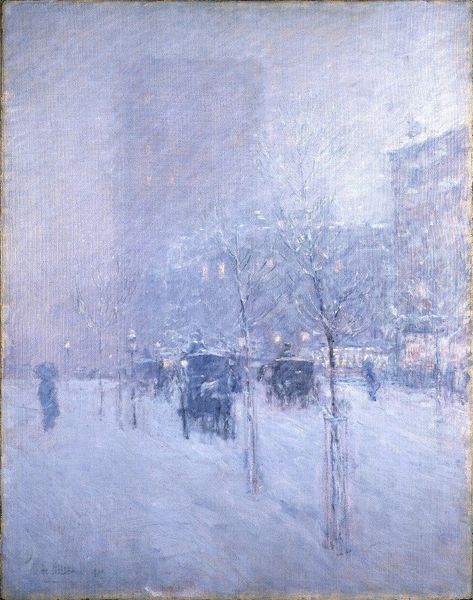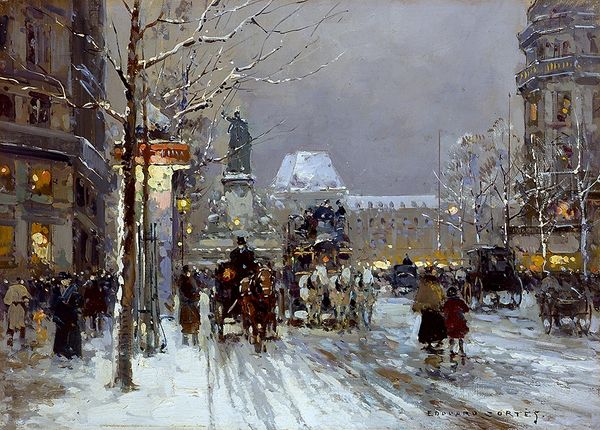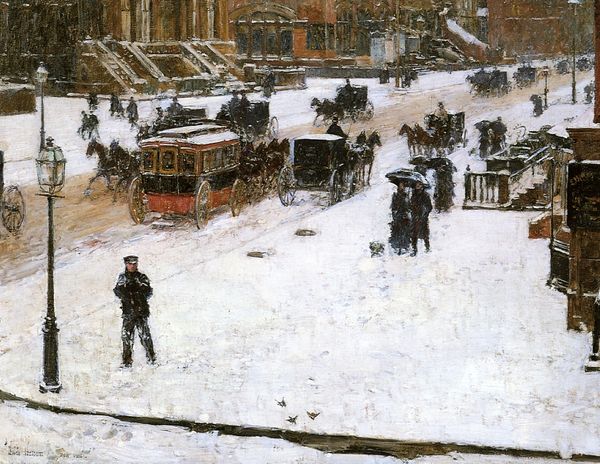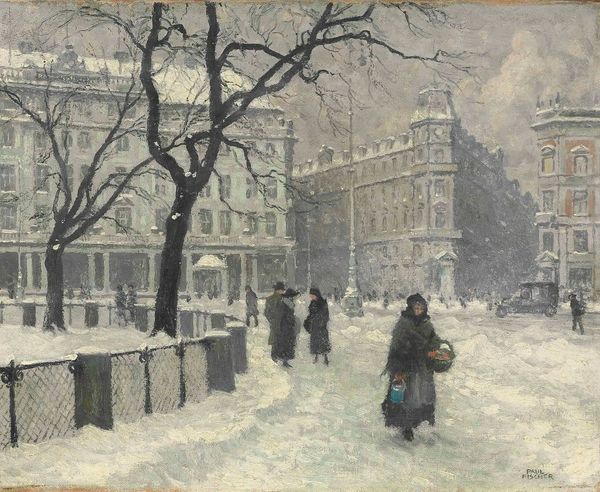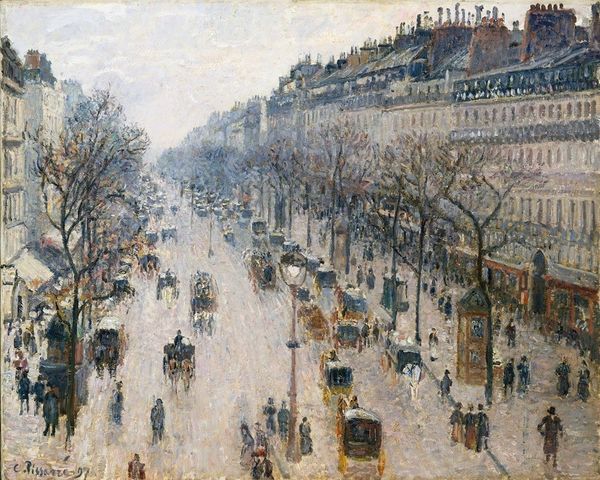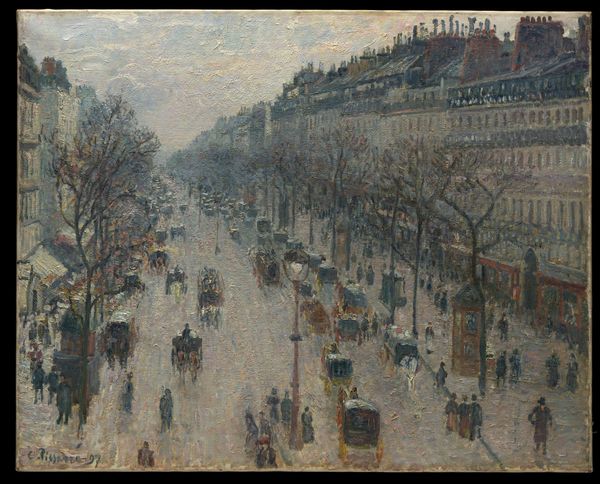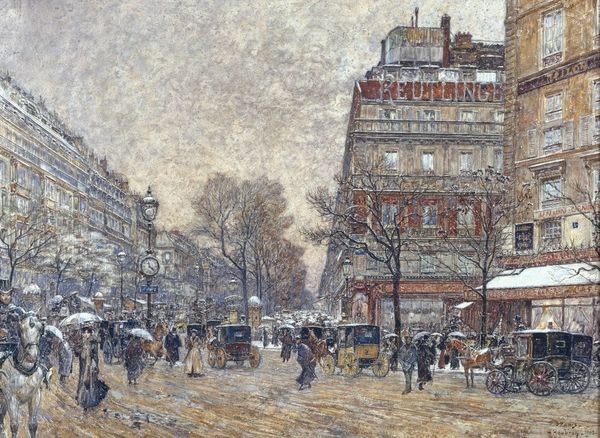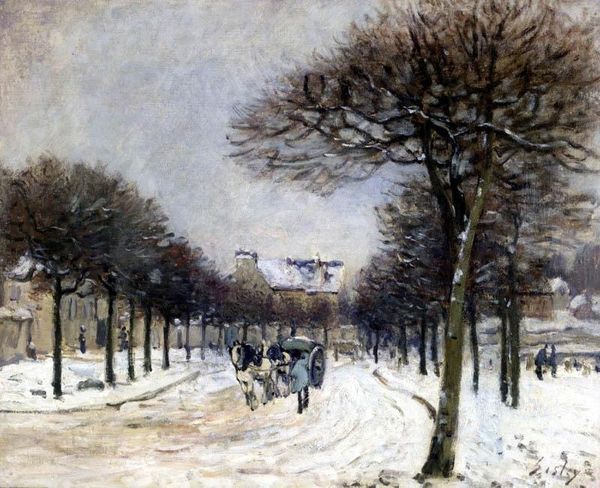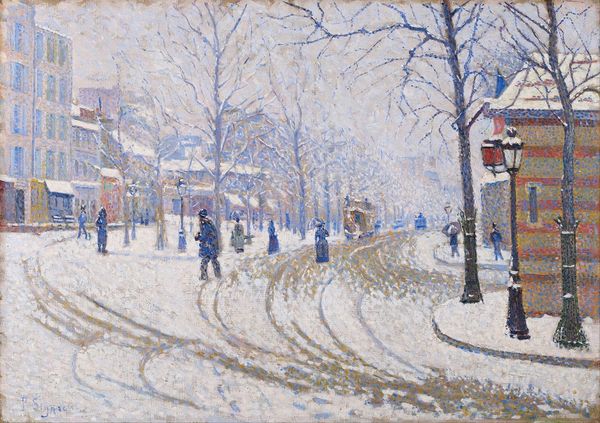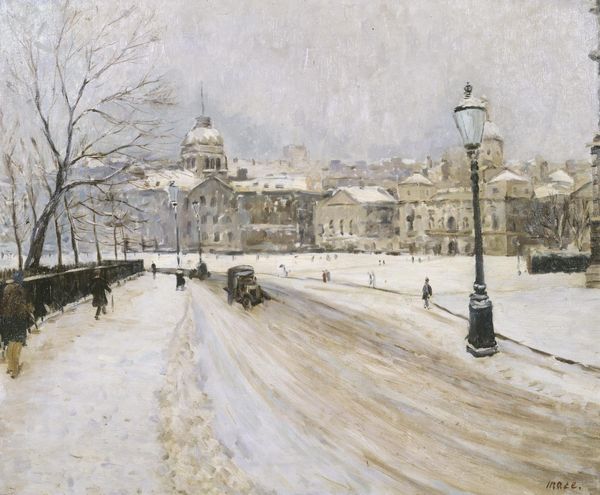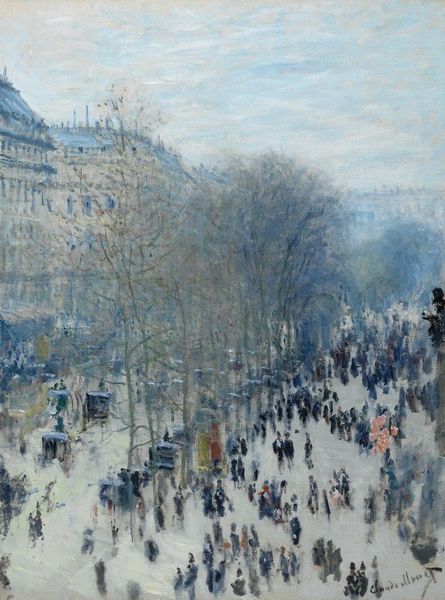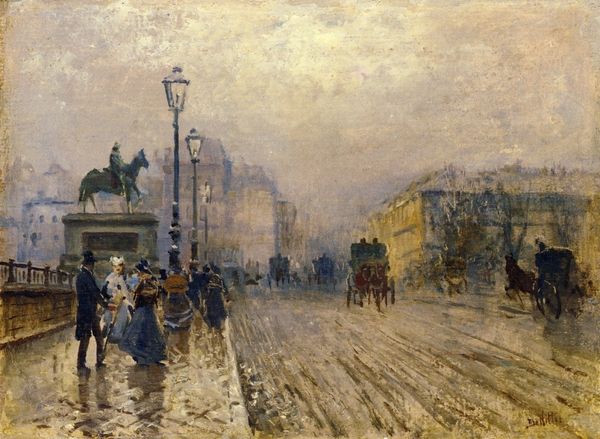
Copyright: Public domain
Curator: Looking at Childe Hassam’s "Winter in Union Square," created in 1892 using oil paints, one is immediately struck by the tranquility evoked in the urban landscape. What do you make of this painterly moment? Editor: Immediately, I sense a profound commentary on urban alienation. The blizzard blurs the lines between the classes, between public and private spaces; it presents the street as an unromantic stage where isolation and resilience intersect under a shared blanket of oppression. The artist highlights an experience both communal and yet devastatingly individual. Curator: Hassam's plein-air style really comes through here, capturing the sensory immediacy of a snowy New York day. The layering of paint creates that very sense of a damp chill. Consider the materiality – the thick impasto evoking the density of the snow itself, and the active brushwork! Editor: Indeed, it would be negligent of me not to discuss the societal ramifications for women at the time. Note the figures scattered through the park: isolated individuals moving within gendered confines of society, negotiating both visible and invisible obstructions to movement, expression, and autonomy within the urban landscape of late-nineteenth-century America. Curator: You bring up an important point about how Hassam’s work documented evolving urban experiences. In terms of process, I can’t help but wonder how many layers of paint make up each snowflake, each carriage wheel. The making of it speaks to the industry of the period as well. Editor: Absolutely. This city, so beautiful under its veil, also conceals issues regarding class division, racism and nativism, especially toward the newer immigrant populations. This prompts discussion about how Hassam perhaps consciously, or unconsciously, highlights these inequalities through visual storytelling during this time period. Curator: Right. It seems both of our perspectives shed light on why Hassam's "Winter in Union Square" remains a fascinating piece –one capturing both the process of impressionistic painting and the social climate of its time. Editor: It certainly underscores how aesthetics and lived realities intertwine in this complex dance. Let’s hope conversations inspired by this painting encourage future equitable participation for everybody within urban landscapes across all historical periods.
Comments
No comments
Be the first to comment and join the conversation on the ultimate creative platform.
